winter
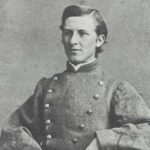
 During the Civil War, the fighting was much different than these days…not just in the weapons used, but in a much bigger way. To send men out to battle in the winter was just too risky. Impassable, muddy roads and severe weather impeded active service in the wintertime. In fact, during the Civil War, the soldiers only spent a few days each year in actual combat. The rest of the time was spent getting from one battle to another, and wintering someplace because of bad weather. Even the rainy seasons caused problems, because rain brings muddy roads, and you can’t move heavy cannons on muddy roads. They get stuck. The soldiers tended to have a lot of time on their hands in the winter, and they couldn’t just go home either. In reality, disease caused more soldiers’ deaths than battle did.
During the Civil War, the fighting was much different than these days…not just in the weapons used, but in a much bigger way. To send men out to battle in the winter was just too risky. Impassable, muddy roads and severe weather impeded active service in the wintertime. In fact, during the Civil War, the soldiers only spent a few days each year in actual combat. The rest of the time was spent getting from one battle to another, and wintering someplace because of bad weather. Even the rainy seasons caused problems, because rain brings muddy roads, and you can’t move heavy cannons on muddy roads. They get stuck. The soldiers tended to have a lot of time on their hands in the winter, and they couldn’t just go home either. In reality, disease caused more soldiers’ deaths than battle did.
The soldiers sometimes kept journals of their time, which is where so much of the information we have about their time, came from. One such soldier was Elisha Hunt Rhodes. The winter months were monotonous for the soldiers. There was really nothing to do, but they needed to be kept in shape and at the ready, so the solution became days spent drilling. I’m sure that the boredom caused tempers to flair at times too, but the down time allowed the soldiers some time to bond and have a little bit of fun, as well. Nevertheless, the main objective for the winter months was to stay warm and busy, because their survival depended on it.
Rhodes was in the Army for four years, and he kept a journal for all of that time. He was a member of the 2nd Rhode Island Rhodes and fought in every battle from the First Bull Run to Appomattox. He rose from the rank of private to the rank of colonel in four years. According to Rhodes, the winter months were pretty quiet for the soldiers. They didn’t fight many battles, and so the months were spent drilling or smoking and sleeping. Some of the troops gambled and others drank or even visited the prostitutes who hung out around the camps. Believe it or not, the soldiers actually welcomed Picket Duty, which is when soldiers are posted on guard ahead of a main force. Pickets included about 40 or 50 men each. Several pickets would form a rough line in front of the main army’s camp. In case of enemy attack, the pickets usually would have time to warn the rest of the force. Picket Duty became a welcome break from the day to day monotony, because in Rhoades words, “One day is much like another at headquarters.”
Rhodes spent most of his winter months in or near Washington DC, giving him more diversions than some soldiers in the Civil War, who were in more remote locations. On one such trip into town came on February 26, 1862, he took the opportunity to hear Senator Henry Wilson from Massachusetts speak on expelling disloyal members of Congress. After listening to the speech, Rhodes and his friend Isaac Cooper attended a fair at a 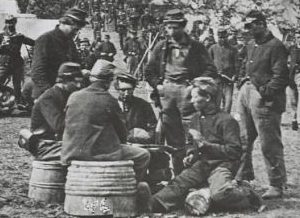
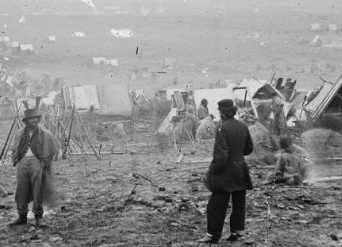 Methodist church and met two young women, who the soldiers escorted home. Like other soldiers, Rhodes welcomed the departure from winter quarters and an end to the monotony. “Our turn has come,” he wrote when his unit began moving south to Richmond, Virginia,in 1864. His winter break was over, and he would find himself back in battle again. Rhodes would survive the Civil War and after a long life, passed away on January 14, 1917 at 75.
Methodist church and met two young women, who the soldiers escorted home. Like other soldiers, Rhodes welcomed the departure from winter quarters and an end to the monotony. “Our turn has come,” he wrote when his unit began moving south to Richmond, Virginia,in 1864. His winter break was over, and he would find himself back in battle again. Rhodes would survive the Civil War and after a long life, passed away on January 14, 1917 at 75.

![]() Yesterday, I heard the news that one of the iconic giant sequoia trees, located in Calaveras Big Trees State Park, in California’s Sierra Nevada Mountains, is gone. The tree had been hollowed out to allow cars to drive through it. The Pioneer Cabin Tree, usually referred to as simply the “tunnel tree,” is estimated to be over 1,000 years old. It was knocked over by a powerful winter storm that slammed into California on Sunday. While the tunnel had been carved out of the tree, it was still very much a living tree.
Yesterday, I heard the news that one of the iconic giant sequoia trees, located in Calaveras Big Trees State Park, in California’s Sierra Nevada Mountains, is gone. The tree had been hollowed out to allow cars to drive through it. The Pioneer Cabin Tree, usually referred to as simply the “tunnel tree,” is estimated to be over 1,000 years old. It was knocked over by a powerful winter storm that slammed into California on Sunday. While the tunnel had been carved out of the tree, it was still very much a living tree.
I immediately though back to a vacation my husband, Bob and I took a few years back, that took us through the scenic Redwood National Park in northern California. While the tree that we were able to drive through was not the one that was toppled in this storm, I still felt the loss of that amazing tree. The giant sequoia is the world’s largest tree, after all, and it is only found in the western slopes of the Sierra Nevada Mountains. It can reach a height of 325 feet. This particular tree, called the Pioneer Cabin Tree was actually hollowed out in about 1880. For a long time, cars drove through the iconic tree, but in recent years, it was only accessible by hiking trail. I thought about the tree we drove through, and how much fun it was to see such a huge tree. I was quite saddened by the loss of this beautiful tree.
Apparently, a volunteer, Jim Allday was in the park on Sunday when the tree came crashing down. It was about 2 pm, and the tree splintered on impact. The thing that he found most concerning was that visitors had been walking through the tree just hours earlier. He went out to the site to find the tree on the ground, and what ![]()
![]() looked like a pond or river running through it. The river was most likely the cause of the tree’s demise. The powerful winter storm brought heavy rain and snow to the area. It was the worst flooding in over a decade. The storm forced the closing of Yosemite National Park. It brought with it, hurricane-force winds of over 100 miles per hour. The wind and soggy ground were just too much for the giant tree. For people in the area, and anyone who has ever had the opportunity to see the tree and the park, it feels like losing a famous historical figure, and at 1,000, it was a great historical figure indeed.
looked like a pond or river running through it. The river was most likely the cause of the tree’s demise. The powerful winter storm brought heavy rain and snow to the area. It was the worst flooding in over a decade. The storm forced the closing of Yosemite National Park. It brought with it, hurricane-force winds of over 100 miles per hour. The wind and soggy ground were just too much for the giant tree. For people in the area, and anyone who has ever had the opportunity to see the tree and the park, it feels like losing a famous historical figure, and at 1,000, it was a great historical figure indeed.
 The Washington cousins, George and William, are cousins of my husband’s family as well, and so their heroism is of interest to me. General George Washington, before he became our first president, was a great general, who played a huge part in making the United States the great nation it is. But, there was another cousin, who played a part…whether George Washington knew that or not, I can’t say, but they did work together to bring a victory in the Revolutionary War that was quite unusual in it’s scope…for that era anyway. That cousin, was Henry Knox, who was born on July 25, 1750, the seventh of ten children of William and Mary Knox.
The Washington cousins, George and William, are cousins of my husband’s family as well, and so their heroism is of interest to me. General George Washington, before he became our first president, was a great general, who played a huge part in making the United States the great nation it is. But, there was another cousin, who played a part…whether George Washington knew that or not, I can’t say, but they did work together to bring a victory in the Revolutionary War that was quite unusual in it’s scope…for that era anyway. That cousin, was Henry Knox, who was born on July 25, 1750, the seventh of ten children of William and Mary Knox.
During the Revolutionary War, it was not unusual for armies to winter somewhere, and then pick up the war in the spring. Because they couldn’t go from place to place as quickly then as they do now, they were left with little choice. Soldiers could die in the frigid conditions, if they didn’t find someplace to wait out the winter months…or so it was thought. Knox was in the military serving with Massachusetts forces in the Army of Observation during the opening days of the Siege of Boston. His abilities soon brought him to the attention of new army commander General George Washington when the general inspected fortifications designed by Knox near Roxbury. The two men quickly became friends. When the army desperately needed artillery, Washington consulted Knox for advice in November 1775. Knox suggested the idea that the 59 cannons recently captured at the fall of forts Ticonderoga and Crown Point in upstate New York  could have a decisive impact on the outcome of the siege. Knox did not have a commission in the army, but John Adams in particular worked in the Second Continental Congress to acquire for him a commission as colonel of the army’s artillery regiment. Washington was so impressed that he put Knox in charge of an expedition to retrieve them even though Knox’s commission had not yet arrived. Reaching Ticonderoga on December 5, 1775, Knox commenced what came to be known as the noble train of artillery, hauling by ox-drawn sled 60 tons of cannons and other armaments across some 300 miles of ice covered rivers and snow draped Berkshire Mountains to the Boston siege camps.
could have a decisive impact on the outcome of the siege. Knox did not have a commission in the army, but John Adams in particular worked in the Second Continental Congress to acquire for him a commission as colonel of the army’s artillery regiment. Washington was so impressed that he put Knox in charge of an expedition to retrieve them even though Knox’s commission had not yet arrived. Reaching Ticonderoga on December 5, 1775, Knox commenced what came to be known as the noble train of artillery, hauling by ox-drawn sled 60 tons of cannons and other armaments across some 300 miles of ice covered rivers and snow draped Berkshire Mountains to the Boston siege camps.
The region they were traveling through to reach Boston was lightly populated and Knox had to overcome difficulties with hiring personnel and obtaining animals. On several occasions cannons crashed through the ice on river crossings, but the detail’s men were always able to recover them. In the end, what Knox had expected to take just two weeks actually took more than six, but he was finally able to report the arrival of the weapons train to Washington on January 27, 1776. The operation was called “one of the most stupendous feats of logistics” of the entire war by historian Victor Brooks. Knox’s effort is commemorated by a series of plaques marking the Henry Knox Trail in New York and Massachusetts.

Upon their arrival in Cambridge the cannons were immediately deployed to fortify the Dorchester Heights recently taken by Washington. So commanding was the new battery over Boston harbor the British withdrew their fleet to Halifax. With the siege ended, Knox undertook the improvement of defenses in Connecticut, Rhode Island, and New York City in anticipation of British attack there. In New York he met Alexander Hamilton, commander of the local artillery. The two men formed a close friendship that lasted until Hamilton’s death in 1804. During his military service Knox also established a close friendship with fellow Massachusetts native Benjamin Lincoln. Henry Knox would go down in history as being one of the great strategists in this nation.
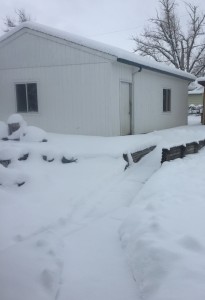 There is an old saying, “If March comes in like a lion, it will go out like a lamb.” If that’s the case, then one must assume that the opposite is also true. And in the case of March, 2016…the opposite would definitely be the case. Bob and I were married on March first, and so we go to Thermopolis around that time to celebrate our anniversary. This year was absolutely beautiful!! It was warm with no snow, and our quiet little walks were just lovely. The groundhog had predicted an early Spring this year…and unusual prediction for him, so I was feeling very optimistic about the remainder of the Winter…or the lack thereof. Now it’s not that I’m superstitious, and I don’t believe that these predictions are superstition anyway, but rather God’s way of showing us little signs of His plans for the future. He tells the animals things that humans just don’t hear, like telling the geese when to fly south or to head north. We humans have somehow become so scientific that we fail to listen to the signs from God.
There is an old saying, “If March comes in like a lion, it will go out like a lamb.” If that’s the case, then one must assume that the opposite is also true. And in the case of March, 2016…the opposite would definitely be the case. Bob and I were married on March first, and so we go to Thermopolis around that time to celebrate our anniversary. This year was absolutely beautiful!! It was warm with no snow, and our quiet little walks were just lovely. The groundhog had predicted an early Spring this year…and unusual prediction for him, so I was feeling very optimistic about the remainder of the Winter…or the lack thereof. Now it’s not that I’m superstitious, and I don’t believe that these predictions are superstition anyway, but rather God’s way of showing us little signs of His plans for the future. He tells the animals things that humans just don’t hear, like telling the geese when to fly south or to head north. We humans have somehow become so scientific that we fail to listen to the signs from God.
Of course, the scientists would say that they are able to predict the weather too, and perhaps they do listen to the signs of God, whether they admit that is what they are doing or not. Still, I find it odd that things like the groundhog not seeing his shadow on February 2nd, or the way March makes it’s annual entrance, can have such an impact of the weather over the next month or so, but they do nevertheless. One thing that many of us have come to look for is the time when the geese fly south. If they head out early, we have a pretty good idea that Winter will soon follow, but if the stay around into late fall, things could be very different for the Winter. They simply have been told that there is no hurry to leave. It is maybe the one sign from God that we humans have noticed over the years.
Be that as it may, we have arrived at the end of March in Wyoming. Enter Winter Storm Troy!! This Winter has been a relatively easy one, even though, the snow that fell in mid-December, didn’t leave the streets until mid-February. Nevertheless, I am pretty much over Winter after the first snow of the season, so I was looking forward to an early Spring. Now, with the end of March upon us, it decides to follow the old saying, and go out  like a lion…since it came in like a lamb. That said, we are sitting here in Wyoming with about sixteen inches of snow on the ground, many businesses closed, and schools that would be…were it not for Spring Break. This storm is not supposed to hang around very long, but those unfortunate people in its path could get anywhere from 1″ to 47″ of the white stuff. I certainly hope we are not on the 47″ end of that scale. The snow is expected to continue through tonight and finally heading out around 6pm tomorrow. After that, look out, because when the temperatures heat up to the low fifties by Sunday, all this snow is going to melt, and become…a whole lot of water. I guess that is the April Fools Day joke in all of this weather prediction process.
like a lion…since it came in like a lamb. That said, we are sitting here in Wyoming with about sixteen inches of snow on the ground, many businesses closed, and schools that would be…were it not for Spring Break. This storm is not supposed to hang around very long, but those unfortunate people in its path could get anywhere from 1″ to 47″ of the white stuff. I certainly hope we are not on the 47″ end of that scale. The snow is expected to continue through tonight and finally heading out around 6pm tomorrow. After that, look out, because when the temperatures heat up to the low fifties by Sunday, all this snow is going to melt, and become…a whole lot of water. I guess that is the April Fools Day joke in all of this weather prediction process.
 It’s funny, how time changes people. When our daughters, Corrie Schulenberg Petersen and Amy Schulenberg Royce, were little, we lived on a place east of Casper. We had a well, septic system, and our home was heated by propane. All that didn’t matter to the girls, and when they were little, they didn’t mind living in the country. I suppose it was just normal, and having all that space was a nice thing for them. They could ride their bicycles all over the place, and there were friends near enough for them to have playmates. For kids with no place to go exactly, the whole thing was just fine. Bob and I liked it too during those years. Of course, when we started bowling…like every day, living in the country wasn’t quite as convenient. We were I town all the time. In fact, my sister, Alena Stevens told me once that we weren’t country people…we were city people who slept in the country. She was right, of course. It wasn’t too long before we began to think about moving to town….but I’m getting a little ahead of myself.
It’s funny, how time changes people. When our daughters, Corrie Schulenberg Petersen and Amy Schulenberg Royce, were little, we lived on a place east of Casper. We had a well, septic system, and our home was heated by propane. All that didn’t matter to the girls, and when they were little, they didn’t mind living in the country. I suppose it was just normal, and having all that space was a nice thing for them. They could ride their bicycles all over the place, and there were friends near enough for them to have playmates. For kids with no place to go exactly, the whole thing was just fine. Bob and I liked it too during those years. Of course, when we started bowling…like every day, living in the country wasn’t quite as convenient. We were I town all the time. In fact, my sister, Alena Stevens told me once that we weren’t country people…we were city people who slept in the country. She was right, of course. It wasn’t too long before we began to think about moving to town….but I’m getting a little ahead of myself.
As the girls became teenagers, and began driving and dating, the whole thing about living in the country…well,  the girls didn’t like it so much anymore. The long distance to town became an annoyance to them, and in the Winter months, the roads…which were awful, made for a treacherous drive both morning and night. Their boyfriends weren’t too keen on coming all the way out there to pick them up, but I must say, that Corrie’s husband, Kevin was a pretty good sport about it. Still with both future husbands, there were many times when dates took place after the girls got off work, and that meant that they had to drive themselves home afterward. I think it was about the time that the girls started driving, that I began to see that living in the country was not always sunshine and wide open spaces. There was a lot of dangers that my girls had to face on those drives home, and I don’t think I would have survived those years, had it not been for prayer and God’s angels to watch over my babies. We had taught them how to drive, and what to do to be safe, but when you turn your girl loose to drive home at midnight, you need the angels out there with them. That’s all there is to it.
the girls didn’t like it so much anymore. The long distance to town became an annoyance to them, and in the Winter months, the roads…which were awful, made for a treacherous drive both morning and night. Their boyfriends weren’t too keen on coming all the way out there to pick them up, but I must say, that Corrie’s husband, Kevin was a pretty good sport about it. Still with both future husbands, there were many times when dates took place after the girls got off work, and that meant that they had to drive themselves home afterward. I think it was about the time that the girls started driving, that I began to see that living in the country was not always sunshine and wide open spaces. There was a lot of dangers that my girls had to face on those drives home, and I don’t think I would have survived those years, had it not been for prayer and God’s angels to watch over my babies. We had taught them how to drive, and what to do to be safe, but when you turn your girl loose to drive home at midnight, you need the angels out there with them. That’s all there is to it.
Then came the time when we decided that country living wasn’t all it had been cracked up to be when the girls were little. Unfortunately for Corrie, the final decision to move to town came after her marriage…much to her  dismay. And in reality, it came only eight months before Amy’s marriage to Travis. Once we moved to town, I found myself really back in my element again, because I had been raised in Casper, after all. Bob was raised in the country, but he adapted to living in town like a man who had never lived a day of his life in the country. Corrie and Kevin live in Casper too, as did Amy and Travis before their move to Washington. Now, strangely, as they have purchased their home in Ferndale, Washington…or should I say ten minutes outside Ferndale, Amy and Travis…or at least Amy, has come full circle, and is living in the country again. Travis, like me, was raised in the city. Nevertheless, they will quickly get a handle on the whole country living thing…complete with a well, septic system, and propane. How strange is that?
dismay. And in reality, it came only eight months before Amy’s marriage to Travis. Once we moved to town, I found myself really back in my element again, because I had been raised in Casper, after all. Bob was raised in the country, but he adapted to living in town like a man who had never lived a day of his life in the country. Corrie and Kevin live in Casper too, as did Amy and Travis before their move to Washington. Now, strangely, as they have purchased their home in Ferndale, Washington…or should I say ten minutes outside Ferndale, Amy and Travis…or at least Amy, has come full circle, and is living in the country again. Travis, like me, was raised in the city. Nevertheless, they will quickly get a handle on the whole country living thing…complete with a well, septic system, and propane. How strange is that?
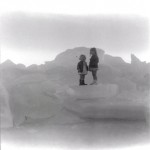
 Every year, I dread the beginning of winter. It doesn’t matter how late it starts, I still wish it was over the minute it begins. I know that many people would say, why do you live where you do, and to that I say…it is where I have always lived…or at least since I was three years old. Before that, up until I was three years old, I lived in Superior, Wisconsin, and I must say that the weather there would have been worse than the winters here, so I have moved to a better place…sort of. Don’t get me wrong…I love Wyoming. It is my home, and in the fall, spring, and summer, I am perfectly happy here. I would just love to eliminate winter all together. I can’t say that I always felt that way about winter, because as a kid, I probably didn’t. I think our parents had no trouble getting my sisters and me to go outside and make snowmen, or snow angels, or build a fort and have a snowball fight. It’s what kids do. In reality it seems like winter bothers us more and more, the older we get. Even my sister, Cheryl Masterson, who loves winter, really has no true desire to be out in it. She likes the beauty of it and the coolness of the air, but shoveling snow or driving in snow…not so much.
Every year, I dread the beginning of winter. It doesn’t matter how late it starts, I still wish it was over the minute it begins. I know that many people would say, why do you live where you do, and to that I say…it is where I have always lived…or at least since I was three years old. Before that, up until I was three years old, I lived in Superior, Wisconsin, and I must say that the weather there would have been worse than the winters here, so I have moved to a better place…sort of. Don’t get me wrong…I love Wyoming. It is my home, and in the fall, spring, and summer, I am perfectly happy here. I would just love to eliminate winter all together. I can’t say that I always felt that way about winter, because as a kid, I probably didn’t. I think our parents had no trouble getting my sisters and me to go outside and make snowmen, or snow angels, or build a fort and have a snowball fight. It’s what kids do. In reality it seems like winter bothers us more and more, the older we get. Even my sister, Cheryl Masterson, who loves winter, really has no true desire to be out in it. She likes the beauty of it and the coolness of the air, but shoveling snow or driving in snow…not so much.
I guess it is a good thing that our lives have seasons too, because if they didn’t, I doubt if anyone would ever do those fun things that kids do in winter. If we all felt the way I do about winter right now, I suppose we would move to a different place every six months or so. That, of course is the snowbird stage of life, except that it would be something that happened much more often, and that is what I would be, were it not for my obligations here. For me, there is a love/hate relationship with the changing seasons. When spring rolls around, I will start to feel alive again, just like the flowers, trees, and birds. My heart sings as the warmer weather approaches, and I feel like hibernating during the colder months. The odd thing too, is that I love winter scenes…in pictures, but in reality, I have no desire to be there…just to look, and then to go out in the warm summer weather I truly love.
Perhaps I need to consider what the difference was when I was a child, and I really did like going out into the snowy weather. Was it that I didn’t mind the cold, or that I didn’t mind dressing for it? Is it that I have 
 forgotten how to play? Probably, that is it. In fact the last time I can say that I really played was when my grandchildren were little. I think it would be great if I could travel back in time those 15 or so years to when I would gladly have gone out in the snow with my grandchildren, because…well, I would do just about anything for them. I suppose that even then I can’t say I loved the cold, but I did have a great time playing with those grandchildren…even if it was cold. I can’t go back in time, so here I am at the beginning of another winter. The snow has arrived, the cold is here…and so it begins.
forgotten how to play? Probably, that is it. In fact the last time I can say that I really played was when my grandchildren were little. I think it would be great if I could travel back in time those 15 or so years to when I would gladly have gone out in the snow with my grandchildren, because…well, I would do just about anything for them. I suppose that even then I can’t say I loved the cold, but I did have a great time playing with those grandchildren…even if it was cold. I can’t go back in time, so here I am at the beginning of another winter. The snow has arrived, the cold is here…and so it begins.
 Because Bob and I took a cruise to Alaska last year, I have found myself interested in all things Alaskan. I don’t really think I would want to move to Alaska, because I am a bit of a wimp when it comes to snow and cold, but I have to say that Alaska is absolutely beautiful…and yes, I would got back for a vacation again…in a heartbeat. While I didn’t like the cool weather, Alaska is a place like no other. The United States took possession of Alaska on this day October 18, 1867, after purchasing it for $7.2 million…less than 2 cents an acre. The Alaska purchase comprised 586,412 square miles, about twice the size of Texas, and was championed by William Henry Seward, the enthusiastically expansionist secretary of state under President Andrew Johnson. Many people thought the purchase was frivolous. Public opinion of the purchase turned more favorable when gold was discovered in a tributary of Alaska’s Klondike River in 1896, sparking a gold rush. Alaska became the 49th state on January 3, 1959, and is now recognized for its vast natural resources and great beauty.
Because Bob and I took a cruise to Alaska last year, I have found myself interested in all things Alaskan. I don’t really think I would want to move to Alaska, because I am a bit of a wimp when it comes to snow and cold, but I have to say that Alaska is absolutely beautiful…and yes, I would got back for a vacation again…in a heartbeat. While I didn’t like the cool weather, Alaska is a place like no other. The United States took possession of Alaska on this day October 18, 1867, after purchasing it for $7.2 million…less than 2 cents an acre. The Alaska purchase comprised 586,412 square miles, about twice the size of Texas, and was championed by William Henry Seward, the enthusiastically expansionist secretary of state under President Andrew Johnson. Many people thought the purchase was frivolous. Public opinion of the purchase turned more favorable when gold was discovered in a tributary of Alaska’s Klondike River in 1896, sparking a gold rush. Alaska became the 49th state on January 3, 1959, and is now recognized for its vast natural resources and great beauty.
Since we were there, I found an app for my phone that tells me about earthquakes around the world, and since 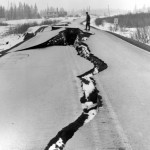 Alaska gets a lot of them, the names of some of the places we were at have shown up on my app periodically. There haven’t been any huge earthquakes, but there are still earthquakes. The reason earthquakes grabbed my interest was because of a movie we watched in Anchorage, about the about the 1964 Great Alaska Earthquake that occurred there. It was the largest earthquake in the history of the United States, registering 9.2 on the Richter Scale. The devastation from that earthquake is something that I will never forget. I wasn’t even there, and I will never forget it. When we walked past the area where so many houses were simply swallowed up…well, it was an eerie feeling. It was hard to shake it. One minute people were living their lives, and the next they are buried alive. Still, life moved on, and people persevered.
Alaska gets a lot of them, the names of some of the places we were at have shown up on my app periodically. There haven’t been any huge earthquakes, but there are still earthquakes. The reason earthquakes grabbed my interest was because of a movie we watched in Anchorage, about the about the 1964 Great Alaska Earthquake that occurred there. It was the largest earthquake in the history of the United States, registering 9.2 on the Richter Scale. The devastation from that earthquake is something that I will never forget. I wasn’t even there, and I will never forget it. When we walked past the area where so many houses were simply swallowed up…well, it was an eerie feeling. It was hard to shake it. One minute people were living their lives, and the next they are buried alive. Still, life moved on, and people persevered.
It takes a rather tough breed of people to live in Alaska. The weather gets extreme, and much of the state is, and always will be a wilderness area. Half of the year has extra long days, and half of the year has extra long nights. Yet, even with the extreme and sometimes brutal weather, the people of Alaska stay there. They work hard all summer to prepare for the long winter, and in summer’s long days, they are outside enjoying the fresh 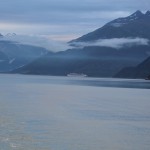 air well into the nighttime hours, because they know that the winter is coming and with it will be the short, cold, dark days. I don’t think most of us could handle Alaska, and yet those who do feel that it is a gift. And that is something I can understand.
air well into the nighttime hours, because they know that the winter is coming and with it will be the short, cold, dark days. I don’t think most of us could handle Alaska, and yet those who do feel that it is a gift. And that is something I can understand.
While I didn’t get to see the Aurora Borealis, I know that I would go back to Alaska for an Aurora Tour in a heartbeat. The mountains there are beautiful, and everything has a feeling of vastness. Alaska is a beautiful state, and one I would really recommend that people visit. While I wouldn’t live there, I would definitely go back there. You simply can’t see Alaska in a one week trip. All that does is whet your appetite. I’m really glad that we purchased Alaska, even if the people weren’t sure it was a great idea at first.
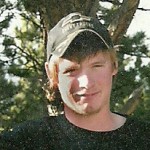
 My nephew, JD Parmely loves cars…I mean really loves cars!! In fact, I have only known one other person in my entire life who owned more cars than JD. At any given time, he may have anywhere from fifteen to twenty five cars. Now I don’t know about you, but I don’t see how a person could possibly use that many cars. I suppose JD could drive each one about 20 days and then move on to the next vehicle. Of course, insuring all those vehicles can be pricey too…I should know. I’m his insurance agent. JD doesn’t leave all the vehicles on the policy at the same time, because that would be really expensive, and in reality, he doesn’t change vehicles all the time either. With that in mind, I’m sure that you can guess that JD has a lot of vehicles that he doesn’t drive at all. He also has some for winter and others for summer. All that makes sense, but it still leaves vehicles that he doesn’t drive at all. Some are classics, and so they aren’t driven much at all, and others, he fixes up and sells, but for the most part, they all belong to him, and they could be driven anytime he wants to.
My nephew, JD Parmely loves cars…I mean really loves cars!! In fact, I have only known one other person in my entire life who owned more cars than JD. At any given time, he may have anywhere from fifteen to twenty five cars. Now I don’t know about you, but I don’t see how a person could possibly use that many cars. I suppose JD could drive each one about 20 days and then move on to the next vehicle. Of course, insuring all those vehicles can be pricey too…I should know. I’m his insurance agent. JD doesn’t leave all the vehicles on the policy at the same time, because that would be really expensive, and in reality, he doesn’t change vehicles all the time either. With that in mind, I’m sure that you can guess that JD has a lot of vehicles that he doesn’t drive at all. He also has some for winter and others for summer. All that makes sense, but it still leaves vehicles that he doesn’t drive at all. Some are classics, and so they aren’t driven much at all, and others, he fixes up and sells, but for the most part, they all belong to him, and they could be driven anytime he wants to.
When his grandparents’ home had to be put up for sale after his grandfather, Walt Schulenberg passed away, JD found himself in the position to purchase the house. It gave him the garage he needed, and the extra space for at least some of his cars. We were all pleased that JD wanted to buy his grandparents’ home, because that meant that it would stay in the family. Selling your parents’ house after they pass is always hard, but this time it was pretty easy…and JD loves the house. I’m sure it keeps great memories alive for him. The house looks a little bit different these days, because JD loves Ford blue, and of course, all the cars are there, but I think his grandpa, Walt Schulenberg would love the fact that JD lives there.

 JD is a mechanic, mostly on Hondas, but he can work on just about anything, and you might see him out in the garage at any time…day or night. Working on vehicles is his first priority…well, maybe second to work…where he also works on vehicles, hahahaha!! So, I guess that working on vehicles is his first priority in all areas of his life. He’s good at what he does, and liked by all who know him. And even if he does have lots of cars, it’s just a quirk, and we love him anyway. Besides, he stays out of trouble that way. Today is JD’s birthday. Happy birthday JD!! Have a great day!! We love you!!
JD is a mechanic, mostly on Hondas, but he can work on just about anything, and you might see him out in the garage at any time…day or night. Working on vehicles is his first priority…well, maybe second to work…where he also works on vehicles, hahahaha!! So, I guess that working on vehicles is his first priority in all areas of his life. He’s good at what he does, and liked by all who know him. And even if he does have lots of cars, it’s just a quirk, and we love him anyway. Besides, he stays out of trouble that way. Today is JD’s birthday. Happy birthday JD!! Have a great day!! We love you!!
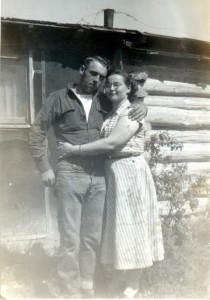 Sixty six years ago, when the bitterly cold winter of 1949 was finally over and spring had finally arrived, my mother-in-law, Joann Knox was a young girl of eighteen, and she was in love. She had known her future husband and the love of her life, Walter Schulenberg, all her life. Still, knowing him didn’t mean they were always in love, or even that they liked each other. Little kids can be friends with someone, and then when they get older, things change. Then, as was the case with my in-laws, things can change again. That annoying teenaged boy or girl suddenly takes on a new look to you. Suddenly, the time is right, and they both wonder why they didn’t see this person this way before. That’s how it was for my in-laws. Grandma Knox, Joann’s mom told me once that after they got older, Mom didn’t like Dad one bit. I would guess that was probably in his bratty adolescent years, when most boys are awkward around girls…especially if they like them at all.
Sixty six years ago, when the bitterly cold winter of 1949 was finally over and spring had finally arrived, my mother-in-law, Joann Knox was a young girl of eighteen, and she was in love. She had known her future husband and the love of her life, Walter Schulenberg, all her life. Still, knowing him didn’t mean they were always in love, or even that they liked each other. Little kids can be friends with someone, and then when they get older, things change. Then, as was the case with my in-laws, things can change again. That annoying teenaged boy or girl suddenly takes on a new look to you. Suddenly, the time is right, and they both wonder why they didn’t see this person this way before. That’s how it was for my in-laws. Grandma Knox, Joann’s mom told me once that after they got older, Mom didn’t like Dad one bit. I would guess that was probably in his bratty adolescent years, when most boys are awkward around girls…especially if they like them at all.
As the years went by, Walt and Joann moved in different circles, and didn’t really see each other very much, but then one day, he noticed her again. My mother-in-law wasn’t too sure how she felt about his new found interest in her, as she still thought of him as a bit of an annoying boy, but if you knew my father-in-law at all, you would know that he had a winning personality, and it was really hard not to like him. That is what my mother-in-law found too. Before long, they were an item. First meeting them after many years of marriage, and meeting them is a more reserved situation…for my mother-in-law at least, I never saw the love struck side of their early relationship. I don’t think their kids really did either. Their love letters, written during the times he was working one place and she another, were tender and sweet. It was such a surprise to see those letters, because they just never seemed to me to be the googly eyed kind of couple, and yet, here in their letters, they were.
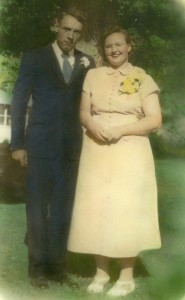
As time passed, their future plans began to grow, and when Joann graduated, they decided to be married. Like their granddaughter, Corrie Petersen, my daughter, they didn’t wait very long after graduation. The wedding took place on the 5th anniversary of D-Day, a fact that I seriously doubt that either of them gave a single thought to…at least not that year. Like many marriages of that time, it was a simple wedding…much like my own parents’ wedding just a few years later. My mother-in-law wore a simple peach colored dress and my father-in-law a suit. Nevertheless, it was for them the perfect day…the culmination of the many years of an on again, off again friendship, now turned to a forever kind of love. Today marks the 66th anniversary of that wedding day, and while my father-in-law has been gone now for two years, my mother-in-law is still alive, and since she does not realize that he is gone, we will still tell her happy anniversary…at the same time that we tell her that Dad is out in the garage working on a car, or at Walmart, or visiting the neighbors, because to tell her he is gone would be just too mean. Happy anniversary to my in-laws, Walt…in Heaven, and Joann, here on Earth. Have a wonderful day. We love you both very much.
 My husband, Bob’s Aunt Esther is the half sister of his dad, Walt Schulenberg. Times were different when Esther was a little girl, and children who lived in the country in northern states often stayed with families that lived in town during the winter because getting to school from the farm wasn’t always easy. Such was the case with Esther, and the family she stayed with was her older brother’s family, my future in-laws, Walt and Joann Schulenberg. Walt and Joann hadn’t been married very long, but they took on the challenge of a school aged child to help out the family.
My husband, Bob’s Aunt Esther is the half sister of his dad, Walt Schulenberg. Times were different when Esther was a little girl, and children who lived in the country in northern states often stayed with families that lived in town during the winter because getting to school from the farm wasn’t always easy. Such was the case with Esther, and the family she stayed with was her older brother’s family, my future in-laws, Walt and Joann Schulenberg. Walt and Joann hadn’t been married very long, but they took on the challenge of a school aged child to help out the family.
I’m sure that as with any child, my mother-in-law found the challenge of a school aged sister-in-law a little problematic at times. She once said to me, “Don’t Esther!!”, when she was frustrated that I was making her go to bed, after Alzheimer’s Disease had made it necessary to help her with these daily tasks. She doesn’t very often mistake me for someone else, but I must say that on that occasion, it was pretty funny to be mistaken for Esther, and from way back when she was getting in trouble for horsing around or some other such mischief. I told Esther, that it was nice to have someone else get the blame for once.
Esther told me once that she had always considered my father-in-law, Walt to be a second dad to her. I suppose that would be true considering that she lived with them. Esther looked up to both her brother and her sister-in-law, and often called them to visit or ask for advise. It was quite hard on her when my father-in-law was very ill, and my mother-in-law was diagnosed with Alzheimer’s Disease. I’m sure it felt like she was losing her parents all over again. I can relate to that, since they have been my second parents for the past 39 years. You grow close, and you don’t think that you will ever lose them…until you do. With her older brother gone now, Esther has felt a loneliness that probably will never go away…and I hate that, because she always had such a sweet smile and delightful laugh, and it hurts to know that she is sad.

My first encounter with Esther was shortly after Bob and I were married. Bob had asked me to cut his hair, and I had never cut a man’s hair before. Needless to say, it was horrible, and our wedding was just a couple of days away. When I met Esther, the haircut was still fresh on our minds, and after telling the story, she laughed about the whole thing and offered to teach me how to cut it correctly. What a lifesaver that was. I have been cutting Bob’s hair ever since, and every time I do, I think of Esther, and how she taught me to cut it. I think I do a pretty good job these days, and Bob must too, because he continues to let me get near him with the hair trimming scissors. Today is Esther’s birthday. Happy birthday Esther!! Have a great day!! We love you!!

